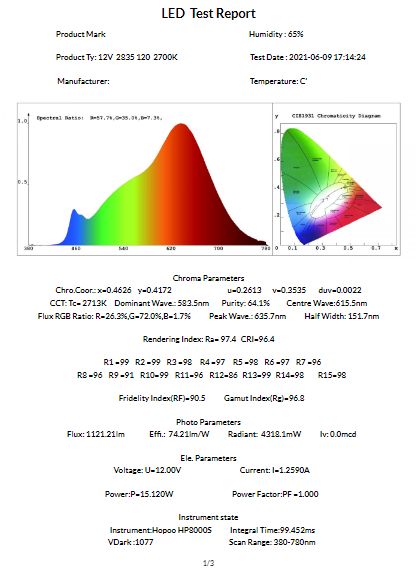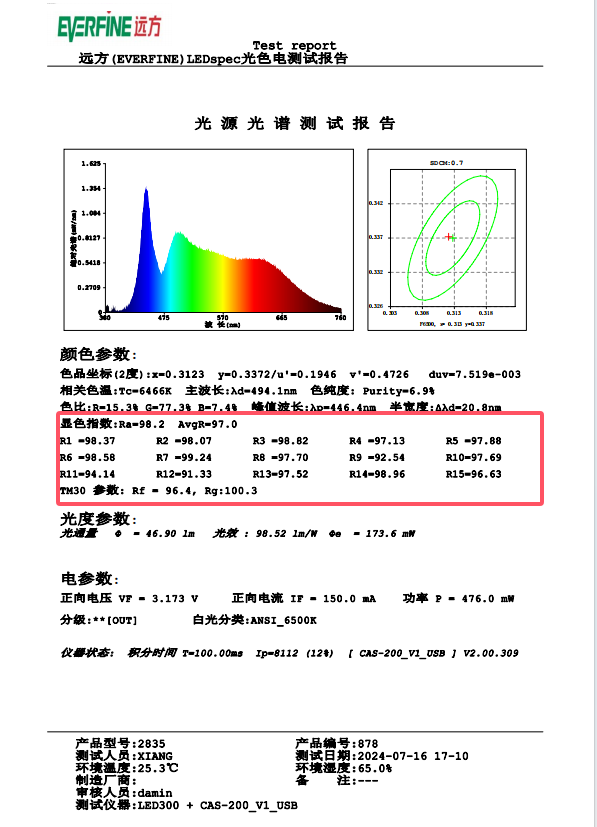What Is CRI (Color Rendering Index)? A Complete Guide to Understanding Color Accuracy
When choosing LED lighting, CRI (Color Rendering Index) is a crucial yet often overlooked parameter. It measures how accurately a light source reveals the true colors of objects compared to natural light, directly affecting visual quality and overall experience.

What Is CRI?
CRI, short for Color Rendering Index, measures how accurately a light source renders the colors of objects it illuminates. Simply put, it indicates whether the light can faithfully reproduce the true colors of objects.
CRI Range: 0–100
Standard: Defined by the CIE (International Commission on Illumination), using sunlight as the reference standard.
Significance: The higher the CRI, the better the light source is at rendering colors. Ideally, a light source that mimics natural sunlight has a CRI of 100.
How Is the CRI Value Determined?
CRI is measured by evaluating how a light source renders a set of standard color samples. Multiple Ri values are obtained and then averaged.
Ra: The most commonly referenced CRI value, calculated as the average of R1–R8 color samples.
R9: A very important but often unlisted value in the CRI specification, specifically measuring the light source’s ability to render red tones.
R9 is critical in many professional applications, such as film and TV lighting, medical lighting, and art illumination, where accurate red reproduction is essential.
Since R9 is not included in the standard Ra calculation, it is usually presented as a supplementary metric.

The Role of CRI in Daily Life
High-CRI lighting significantly enhances color accuracy, making colors appear more true-to-life and vibrant. This is especially important for commercial lighting, display lighting, and professional applications.
For example:
Standard commercial LED strips: Typically have a CRI around 95. Many supermarkets now use this standard to make product colors appear more natural and vivid, improving the shopping experience.
Specialized equipment lighting:Requires higher CRI values. Strips with CRI up to 98 are used in fields demanding precise color accuracy, such as high-end retail displays, color evaluation instruments, and medical lighting.
Photography and film lighting:Not only requires high CRI but also an R9 value of 98 to ensure accurate red reproduction, achieving optimal imaging results.
This is why different applications have varying CRI requirements—it’s not just about brightness, but also about color performance.

The Relationship Between CRI and Price
CRI used to have a significant impact on LED strip pricing. In the past, strips with a CRI of 90 were noticeably more expensive than those with a CRI of 80. However, with advances in LED technology, most standard LED strips on the market today now achieve a CRI of 90, and price differences are no longer significant.
Strips with a CRI of 95 are slightly more expensive, but it’s important to note that not all “95 CRI” strips are the same:
Average 95: The overall CRI of the strip averages 95, but some color samples (including R9) may fall below this value.
Full-strip 95: Every part of the strip maintains a CRI of 95, including the crucial R9 value. This is essential for professional applications requiring high color accuracy and comes at a higher price.
Therefore, when choosing LED strips, it’s not enough to look at the CRI number alone. You should also check its composition and R9 value to ensure it meets the actual needs, as this directly affects the lighting performance.


Expert Advice
If your project requires high color accuracy—such as art exhibitions, photography studios, retail displays, or medical lighting—it’s recommended to prioritize LED strips with a high CRI and clearly specified R9 values to ensure true-to-life, vibrant illumination.
REQUEST A QUOTE
👉Consult Now → [Click here to contact us]
✉️Or email us at: